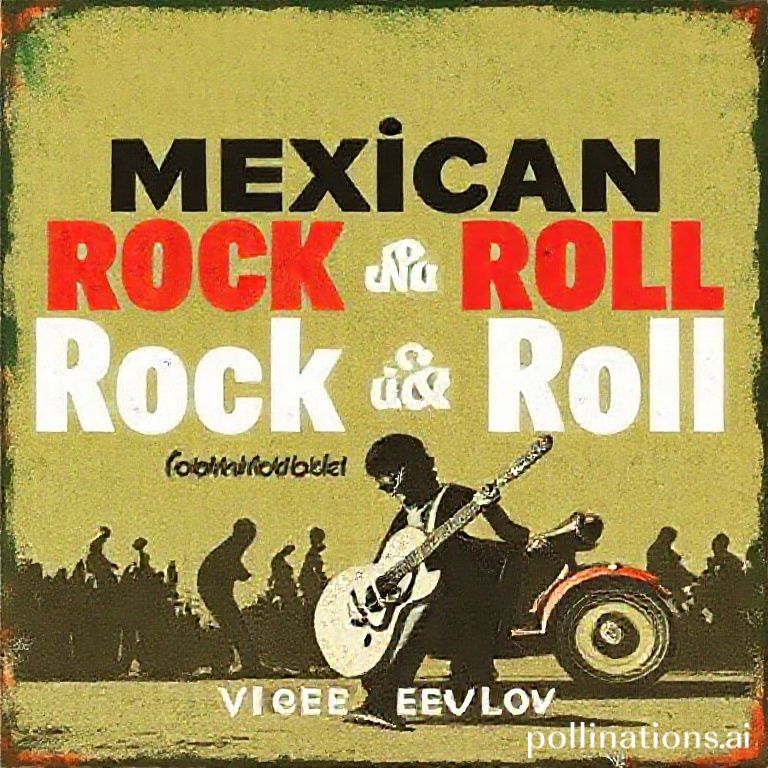Mexican rock and roll, often called “rock en español” or “rock nacional,” is a vibrant and evolving genre that reflects the country’s unique cultural landscape. Emerging in the late 1950s, it quickly became a voice for youth, a platform for social commentary, and a testament to Mexico’s ability to blend international influences with its rich heritage. From its early imitations of American rock to its current diverse forms, Mexican rock has carved out a significant place in the global music scene.
Early Influences and the Birth of Rock and Roll in Mexico
The late 1950s witnessed the rise of rock and roll in the United States, and its infectious energy quickly spread south of the border. Mexican musicians, captivated by artists like Elvis Presley and Chuck Berry, began to emulate their sound. Initially, much of the music was a direct translation or imitation of American hits. However, this period was crucial in laying the foundation for what would become a distinct Mexican rock identity.
Key Figures of the Early Era
- Los Locos del Ritmo: One of the first bands to gain popularity, known for their energetic performances and covers of American rock songs.
- Los Teen Tops: Fronted by the charismatic Enrique Guzmán, they achieved widespread fame with Spanish versions of rock and roll classics.
- Angélica María: A pioneering female figure in Mexican rock, she became a teen idol with her catchy tunes and rebellious image.
The Rise of “Rock en Español” and Cultural Identity
As the 1960s progressed, Mexican rock musicians began to incorporate their own cultural experiences and perspectives into their music. This shift marked the emergence of “rock en español,” a genre that blended rock and roll with traditional Mexican rhythms, melodies, and lyrical themes. The lyrics started reflecting social issues, love, and everyday life in Mexico, making the music more relatable to the local audience.
The Influence of Social Movements
The late 1960s and early 1970s were a time of social and political upheaval around the world, and Mexico was no exception. Mexican rock became a vehicle for expressing dissent and challenging the status quo. Bands began to address issues like government corruption, poverty, and social inequality in their songs.
The Underground Scene and the “Avándaro” Festival
Despite facing censorship and limited mainstream support, Mexican rock continued to thrive in the underground scene. Small venues and independent record labels provided a platform for artists to experiment and develop their unique sounds. The Avándaro Music Festival in 1971, often dubbed the “Mexican Woodstock,” was a landmark event that brought together hundreds of thousands of rock fans. Although controversial at the time, it symbolized the power and potential of Mexican rock culture.
The Impact of Avándaro
- Showcased the growing popularity of Mexican rock.
- Exposed the genre to a wider audience.
- Led to increased censorship and repression of rock music in the following years.
Modern Mexican Rock: Diversity and Innovation
In the decades that followed, Mexican rock diversified into numerous subgenres, reflecting the country’s diverse musical influences. From punk rock and heavy metal to alternative rock and ska, Mexican bands have explored a wide range of sounds and styles. Today, Mexican rock continues to evolve, incorporating elements of electronic music, hip-hop, and traditional Mexican folk music.
Key Modern Bands
- Café Tacvba: Known for their eclectic blend of rock, folk, and electronic music.
- Molotov: Famous for their politically charged lyrics and aggressive sound.
- Zoé: One of the most successful Mexican rock bands of the 21st century, known for their dreamy and atmospheric sound.
Conclusion
The evolution of Mexican rock and roll is a story of cultural adaptation, social commentary, and artistic innovation. From its early imitations of American rock to its current diverse and vibrant forms, Mexican rock has consistently reflected the changing realities of Mexican society. It remains a powerful voice for youth, a platform for social expression, and a testament to the enduring power of music to transcend borders and connect people.
If you enjoyed this article, don’t forget to explore more inspiring stories on Life in Mexico!
IMAGE: A vibrant and dynamic concert scene in Mexico City. A Mexican rock band is performing on a brightly lit stage, with a large crowd of enthusiastic fans cheering and singing along. The atmosphere is energetic and passionate, with colorful lights and confetti adding to the festive mood. The style should be modern and realistic.


